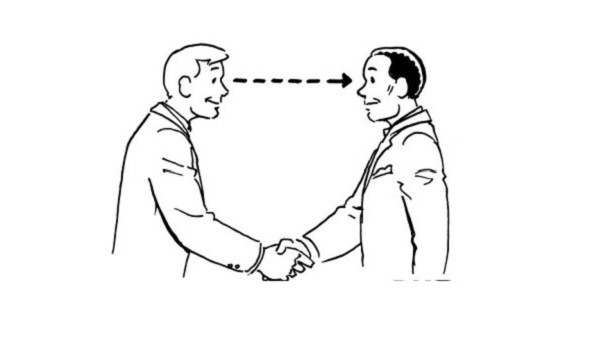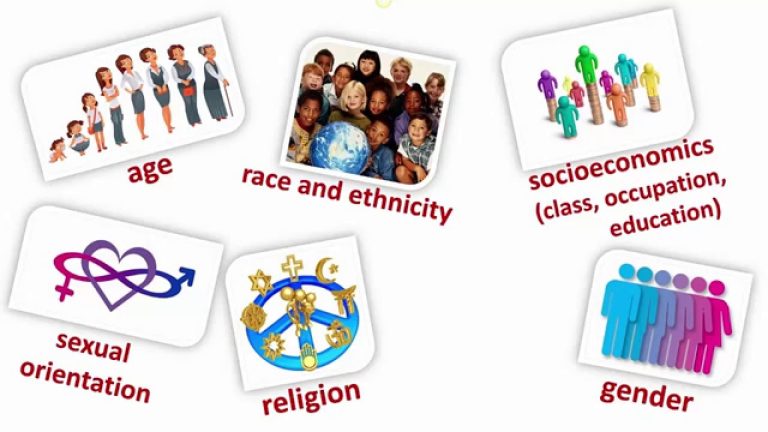Eye Contact When Speaking
Maintaining eye contact when speaking is essential for effective communication and building rapport with others. It conveys confidence, sincerity, and attentiveness.
In addition to verbal communication, non-verbal cues, such as eye contact, play a crucial role in conveying your message and establishing a connection with the listener. Eye contact helps to establish trust and portrays your level of interest and engagement in the conversation.
It also ensures that you are actively listening and encourages the speaker to continue sharing their thoughts. By maintaining eye contact, you can enhance your communication skills and make a positive impact on those around you.

Credit: interactstudio.com
Importance Of Eye Contact
Eye contact when speaking is vital for effective communication. It enhances trust, establishes a connection, and shows attentiveness, making the conversation more engaging and meaningful.
Building Connection
Eyes are often called the windows to the soul, and when it comes to communication, establishing a connection is essential. Eye contact plays a significant role in building that connection. It serves as a nonverbal cue that signals interest and engagement with the person you are speaking to. When you maintain eye contact, you show that you are present and actively listening. This simple act can make the speaker feel valued and acknowledged, fostering a stronger connection between both parties.
Enhancing Credibility
In addition to building a connection, eye contact also enhances credibility. When you maintain eye contact with someone, it conveys confidence and trustworthiness. It shows that you are confident in what you are saying and that you believe in your message. As a result, the listener is more likely to perceive you as a credible source of information and be more receptive to your ideas. Eye contact can be particularly impactful in professional settings, such as job interviews or business presentations, where establishing credibility is vital.
| Importance of Eye Contact | Benefits |
|---|---|
| Building Connection | Signals interest and engagement |
| Enhancing Credibility | Conveys confidence and trustworthiness |
Whether you are engaging in a casual conversation or presenting to a large audience, maintaining proper eye contact can significantly impact your communication skills. It not only helps build a connection with the person you are speaking to but also enhances your credibility as a speaker. By incorporating eye contact into your communication style, you can establish trust, improve engagement, and leave a lasting impression on your listeners.
Incorporating Eye Contact
- Make direct eye contact with the person or audience you are speaking to.
- Hold eye contact for a few seconds before shifting your gaze.
- Avoid prolonged staring, as it may make the other person uncomfortable.
- Engage both eyes, rather than focusing on just one eye.
- Use eye contact strategically to emphasize key points or connect with specific individuals.
- Practice making eye contact in everyday conversations to strengthen your skills.
Benefits Of Maintaining Eye Contact
Maintaining eye contact is a powerful communication tool, enabling effective human connection and enhancing the quality of interactions. When engaged in a conversation, making and maintaining eye contact demonstrates respect, interest, and attentiveness. This behavior not only creates a bond between individuals but also plays a significant role in establishing a positive and open atmosphere.
Active Listening
Eye contact is closely linked to active listening, a fundamental aspect of effective communication. When you maintain eye contact with someone, you are signaling your attentiveness and interest in what they are saying. This encourages the speaker to continue sharing their thoughts, feelings, and ideas, promoting a deeper understanding between both parties.
Nonverbal Communication
Eye contact serves as a crucial form of nonverbal communication. It conveys confidence, trustworthiness, and sincerity. By maintaining eye contact, you can establish a sense of connection and convey your commitment to the conversation. It allows you to read and interpret subtle facial expressions, helping you to better understand the emotions and intentions of the person you are speaking with.
Additionally, eye contact helps regulate the flow of conversation. It acts as a silent cue, indicating when it’s your turn to speak or when you desire to listen. This facilitates smoother, more harmonious exchanges, preventing misunderstandings and enhancing overall communication.
| Benefits of Maintaining Eye Contact | |
|---|---|
| Shows respect and attentiveness to the speaker | |
| Promotes active listening and deeper understanding | |
| Conveys confidence, trustworthiness, and sincerity | |
| Enables interpretation of facial expressions and emotions | |
| Regulates the flow of conversation for smoother exchanges |
Summary
- Maintaining eye contact demonstrates respect, interest, and attentiveness.
- Eye contact promotes active listening and a deeper understanding of the speaker’s thoughts and feelings.
- Eye contact conveys confidence, trustworthiness, and sincerity.
- It enables the interpretation of facial expressions and emotions, enhancing overall communication.
- Eye contact helps regulate the flow of conversation, promoting smoother exchanges.
Types Of Eye Contact
Eye contact plays a crucial role in effective communication. It helps establish connections, convey emotions, and express confidence. Here, we will dive into the different types of eye contact and their significance in interpersonal communications.
Direct Eye Contact
Direct eye contact refers to the act of looking directly into someone’s eyes while speaking or listening. This form of eye contact is often employed to establish rapport, show attentiveness, and convey sincerity. Direct eye contact displays confidence and engagement, indicating that you are actively involved in the conversation.
When engaging in direct eye contact, it is important to strike a balance. Staring too intently might make the other person uncomfortable, while avoiding eye contact altogether can give the impression of disinterest or lack of confidence. Maintaining a steady gaze without staring excessively fosters a sense of connection and trust.
Soft Eye Contact
Soft eye contact, also known as a gentle gaze, is a more relaxed and less intense form of eye contact. It involves maintaining eye contact but with a slightly softer focus. This type of eye contact is often used in casual conversations or non-confrontational situations.
Soft eye contact can convey warmth, understanding, and empathy. It helps create a comfortable and safe environment for open dialogue. When using soft eye contact, be mindful of not appearing disinterested or distracted. By maintaining a gentle gaze and subtly nodding in agreement, you demonstrate your engagement without overwhelming the other person.

Credit: www.o28.si
Tips For Improving Eye Contact
Improving your eye contact skills is essential for effective communication. Whether you are giving a presentation, having a conversation, or participating in a job interview, maintaining good eye contact can greatly enhance your connection with others. Here are some practical tips to help you improve your eye contact:
Practice In Everyday Conversations
One of the most effective ways to improve your eye contact is by practicing in your everyday conversations. Make a conscious effort to maintain eye contact with the person you are speaking with. Focus your gaze on their eyes rather than looking around or at your phone. By doing this, you signal that you are actively listening and engaged in the conversation. Remember, practice makes perfect, so make a habit of maintaining eye contact in all your conversations.
Be Mindful Of Cultural Differences
It’s important to be mindful of cultural differences when it comes to eye contact. In some cultures, prolonged eye contact is seen as a sign of respect and attentiveness, while in others it may be considered intrusive or disrespectful. Therefore, it’s crucial to be aware of the cultural norms and adjust your eye contact accordingly. Research and familiarize yourself with the cultural practices and customs of the person or group you are interacting with to ensure your eye contact is appropriate.
Overcoming Eye Contact Challenges
Overcoming Eye Contact Challenges
Nervousness And Anxiety
Nervousness and anxiety can often hinder our ability to maintain steady eye contact during a conversation. When we become anxious, it’s natural for our eyes to wander or avoid meeting the gaze of the person we’re speaking to. This lack of eye contact can lead to misunderstandings and a breakdown in effective communication. However, there are strategies we can employ to overcome these challenges and build confidence in maintaining eye contact.
Distractions And Inattentiveness
In today’s fast-paced world, distractions are everywhere, and maintaining focus can be a constant struggle. Whether it’s the ping of a notification on your phone or the lure of an interesting conversation happening nearby, it’s easy for our attention to shift away from the person we should be engaging with. This leads to inattentiveness and a lack of eye contact, which can give the impression of disinterest or disrespect. To combat this, it’s essential to consciously minimize distractions and give our full attention to the person in front of us.

Credit: www.throughlinegroup.com
Frequently Asked Questions For Eye Contact When Speaking
Faq 1: Why Is Eye Contact Important In Speaking?
Eye contact is crucial in communication as it establishes trust, connection, and shows active listening.
Faq 2: How Does Eye Contact Enhance Public Speaking?
Maintaining eye contact during public speaking creates rapport, engages the audience, and conveys confidence and credibility.
Faq 3: Can Avoiding Eye Contact Affect Communication?
Avoiding eye contact may be perceived as disinterest or lack of confidence, impacting effective communication and connection with others.
Conclusion
Maintaining eye contact when speaking is crucial for effective communication. It helps establish trust, engagement, and connection with the listener. Eye contact shows sincerity and confidence, making the speaker more persuasive and influential. By keeping eye contact, we can convey our message more efficiently, ensuring better understanding and comprehension from the audience.
So, next time you engage in a conversation, remember the power of eye contact and its impact on effective communication.


